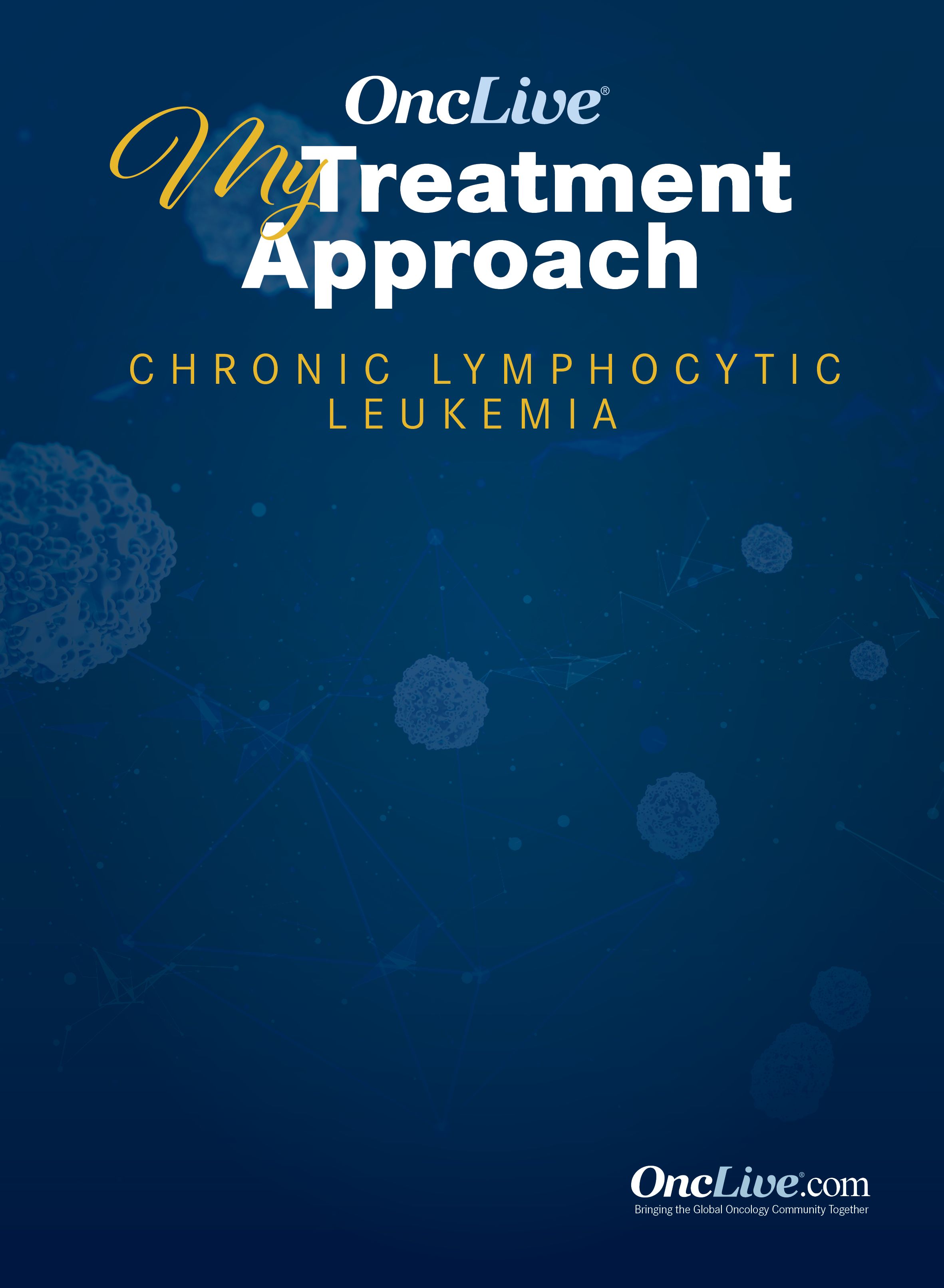BTK Inhibitor Combos Could Transform the Complex CLL Armamentarium
Alan P. Z. Skarbnik, MD, breaks down factors that should be kept in mind when navigating the complex chronic lymphocytic leukemia armamentarium as it relates to BTK inhibitors.
Alan P. Z. Skarbnik, MD

Given the somewhat heterogeneous makeup of chronic lymphocytic leukemia (CLL), patients present to the clinic with a variety of cytogenetics that could affect the type of treatment they receive, according to Alan P. Z. Skarbnik, MD.
Although the approvals of ibrutinib (Imbruvica) and acalabrutinib (Calquence) have been transformative to the treatment paradigm, they could have even more power in combination. Moreover, the decision to use one of these agents is based on a number of factors.
“Two BTK inhibitors are approved for the treatment of [patients with] CLL in the frontline setting: acalabrutinib and ibrutinib. However, there’s no head-to-head comparison between these 2 agents yet. A study is going on in the relapsed setting for high-risk disease, although we are still awaiting these results, as well,” Skarbnik explained. “Based on clinical experience, my preference tends to be acalabrutinib. This agent seems to be better tolerated by patients, especially older patients.”
In an interview with OncLive® before the 2020 American Society of Hematology Annual Meeting and Exposition, Skarbnik, a hematologist/oncologist with Novant Health, broke down factors that should be kept in mind when navigating the complex CLL armamentarium.
OncLive®: How do you approach treatment selection for a patient with CLL? What are some of the key factors that you consider in making your decision?
Skarbnik: CLL is somewhat a heterogeneous disease. Patients may present in different ways and with different cytogenetics, which will determine their risk in terms of progression. From that, we can [infer] what therapy would be best for that particular patient.
Some factors to look into are IGHV mutational status, fluorescence in situ hybridization [FISH] test results, and both deletion 17p [del (17p)] and del(11q). This is not as important as it used to be, but it certainly guides us away from the use of chemotherapy, for example. We’ll look at TP53 mutations, which may be present—even in the absence of del(17p). Moreover, if there are complex cytogenetics, they may not be captured by FISH. When there are 2 or 3 genetic abnormalities, the risk of progression and resistance may increase.
Based on patient age, presentation, and risk, we’ll then decide what treatment will be ideal for that patient. In general, we’re trying to stay away from chemoimmunotherapy, given the novel agents that are available. In my opinion, chemoimmunotherapy should be reserved for fludarabine, cyclophosphamide, and rituximab [Rituxan; FCR], which is the therapy of choice for patients who are young and fit and have a good performance status, low-risk disease, and no sudden genetic abnormalities. This patient may experience a very prolonged remission with the use of FCR. However, this makes up only a small portion of the population; it’s not the typical patient with CLL who we see.
Now, the 2 main approaches would be a BTK inhibitor vs a fixed-duration treatment with venetoclax [Venclexta] or obinutuzumab [Gazyva] vs a CD20-directed single- agent. It’s usually for patients who are older or who cannot tolerate other therapies. To differentiate among venetoclax, obinutuzumab, and a BTK inhibitor, my opinion is based on whether patients are candidates for fixedduration therapy.
It seems that the patients who have a del(17p) and/or a TP53 mutation do start to progress sooner than those without those abnormalities. Once fixed-duration treatment with venetoclax and obinutuzumab is discontinued, I will treat those patients with BTK inhibitors after 1 year in the frontline setting or after 2 years in the second-line setting.
Patients who don’t have a del(17p) or TP53 mutation may benefit from a fixed-duration therapy with venetoclax and obinutuzumab for 1 year. If the patients respond but end up having a recurrence, we can re-treat them with venetoclax. However, at that point, we could switch to a BTK inhibitor, as well.
Based on retrospective data for BTK inhibitor–naïve patients who have been exposed to venetoclax, [venetoclax elicits an] 80% response rate in the second-line setting. With that said, it’s certainly an option. Either agent is fine, but there is a bit of philosophy involved when selecting a therapy. The patients who harbor del(17p) have a higher risk of progression on finite therapy. The caveat is that they need to be on continuous therapy with a BTK inhibitor.
Ongoing clinical trials are combining BTK inhibitors with venetoclax, with or without a CD20-directed agent, with the intent of finite therapy. As such, that paradigm may be changing over the next couple of years.
How do you approach sequencing in the relapsed/refractory setting?
For patients with relapsed/refractory disease, the choice of therapy will depend on what they received in the first-line setting, in addition to their cytogenetic profile. For example, many patients have received chemoimmunotherapy [up front], but over time, their disease reoccurred. It’s important to remember that cytogenetic disease may change over time. There may be clonal selection and selective pressure by previous therapies.
For patients who received BTK inhibitors and progressed while on therapy, the main mechanism of resistance is a BTK mutation, which happens after exposure to a BTK inhibitor. Therefore, I tend to check for that. There could also be downstream mutations, along with others that are not as common. I do not recommend switching from one BTK inhibitor to another if there was progression while patients were [on treatment]. If there was intolerance to a BTK inhibitor, then there is an opportunity to switch to a different one.
In general, when patients progress on a BTK inhibitor and they shift to venetoclax and a CD20-directed agent in the second-line setting—either obinutuzumab or rituximab—[we need to remember] that, at that time, the proposed treatment is a fixed duration of 2 years. For patients who do have high-risk mutations, we may discuss the idea of proceeding with continuous therapy, even if it’s [with the addition of] venetoclax. Notably, in the relapsed setting, patients have a higher risk of recurrence at the end of treatment. Chemotherapy is rarely used nowadays in the relapsed/ refractory setting.
There are data in the relapsed setting for both venetoclax and acalabrutinib that are superior to chemoimmunotherapy. Both agents have been compared with rituximab and bendamustine. PI3K inhibitors are [available, too,] but they are not as commonly used with CLL.
One of the issues is tolerability: Patients tend to discontinue PI3K inhibitors more than other agents. Ultimately, the choice of therapy is going to depend mostly on what the patient received in the first-line setting.
Could you spotlight ongoing research in CLL? What does the future look like?
A number of clinical trials are ongoing in CLL, which is great. This is excellent for both the patients, who may have access to more modern, effective, and safer therapies, as well as for the physicians who do their best to understand the disease and optimal therapies.
In the frontline setting, we are most excited about some of the trials that are evaluating the combination of novel agents. Preliminary studies have evaluated BTK inhibitors and venetoclax, with or without anti-CD20, which have very high response rates and higher minimal residual disease rates than expected. Therefore, we need to combine those agents to get a deeper response and to make this fixed-duration [regimen] finite. We are minimizing exposure to treatment, but a cost issue exists. The cost of this treatment is very high, so minimizing the length of therapy [when possible] is critical.
In the relapsed setting, a number of CAR [chimeric antigen receptor] T-cell therapy trials are ongoing. The initial trials are looking at later lines of therapy; at that point, the immune system that’s collected from the patient may be more sensitive and not as encouraging. However, the trials that are using CAR T cells earlier seem to have better results.
Fortunately, we have many options to treat patients with CLL. Ten years ago, it was a disease for which we had only 1 or 2 options, and now we have a number of them.




